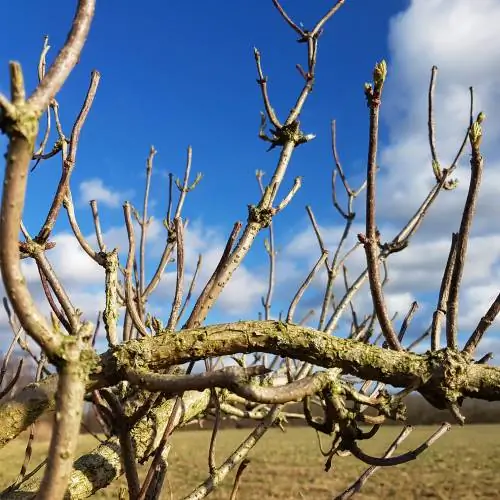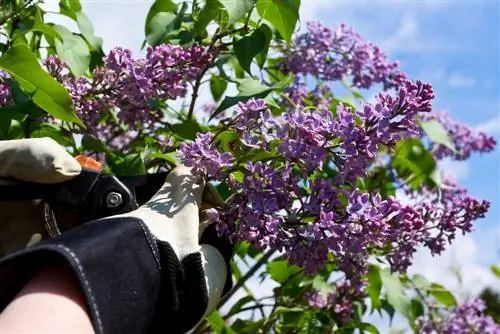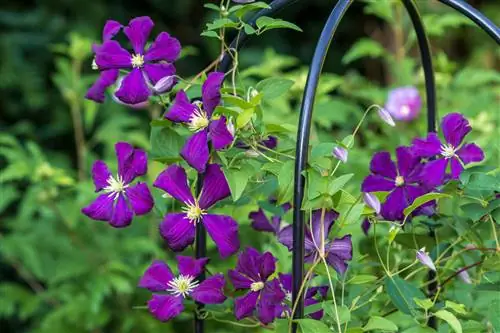- Author admin [email protected].
- Public 2023-12-16 16:46.
- Last modified 2025-01-23 11:20.
For roses that bloom more often, thorough pruning is carried out in early spring; more caring pruning measures are required in summer. The most important work is removing spent shoots in order to maintain a regular flower bloom. Single-flowering roses, on the other hand, are only thinned out and shaped in the summer after flowering.

How do you cut faded roses correctly?
To prune spent roses, remove spent shoots until the next fully developed leaf. For roses that bloom more often, this cut stimulates the formation of new flowers. For roses that bloom once, this cut is only done after flowering.
Pruning single-blooming roses after flowering
In contrast to modern roses that bloom on annual wood, single-blooming roses only develop their flowers on previous and perennial shoots. For this reason, these rose varieties should only be cut back in summer, immediately after flowering. New shoots then immediately grow back, which mature by winter and bear flowers again the next year. For rambler and cascade roses, shorten long shoots and take older branches back to the base. For shrub roses, cut back the high, faded shoots to their normal height, while shortening the side shoots a little more. The rose then shows a beautiful rounded shape again.
Pruning of dead flowers: This is how it's done
With roses that bloom more often, the faded shoots are cut back to the next fully developed leaf. This measure not only ensures that the rose sprouts again and is thus stimulated to bloom again and again, but also prevents various fungal infections. Of course, roses that form rose hips should not be cut - otherwise you would deprive yourself of the wonderful autumnal splendor. What is important with this cut is that the withered shoot is removed up to the next complete five, seven or nine-part leaf. If you look closely, you can see that the leaf located directly under the flower is only formed in one to three parts and is therefore not fully formed. After this rose cut, you can usually enjoy new flowers after about six weeks.
Cut long-term roses regularly
Continuously blooming roses that constantly add new flowers show you where to use the scissors (€25.00 on Amazon). As soon as these varieties have withered, they sprout again. The dead branch can be cut out directly above the new shoot. If you sometimes cut deeper - which may occasionally be necessary to correct the shape - you have to wait a little longer for the next flower.
Extend flowering time by pinching
In June, almost all roses produce a we alth of flowers, which then often diminishes dramatically - even in the more frequently blooming varieties. These need a break to recharge their batteries for the formation of new flowers. With a trick you can still get the roses to bloom during this time. With so-called tweezing, you remove up to a third of the shoots including the buds before the first flowering. Underneath there are sleeping eyes that sprout again immediately and finally bloom exactly when the first bloom is over.
Tip
Wild roses are not cut, only thinned out. Their graceful, overhanging growth continues to decorate after flowering, and most species and varieties also develop rose hips. An exception, however, are the rugosa roses, also known as potato roses, which do better with more severe pruning - they age easily without pruning.






